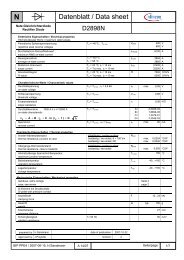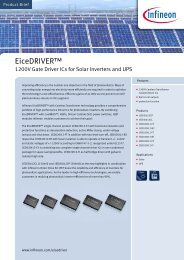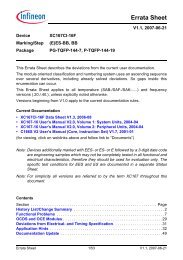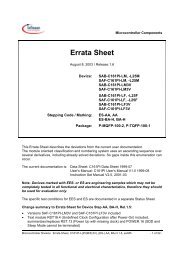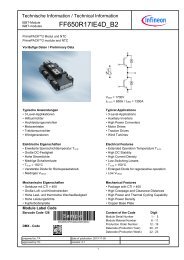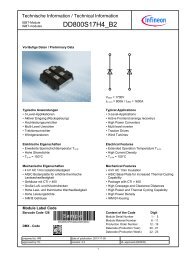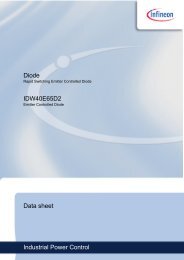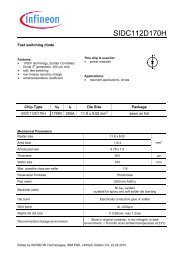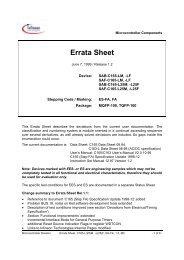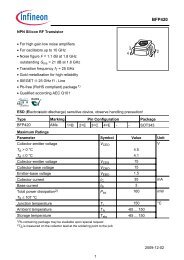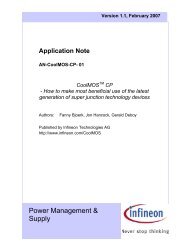Download Datasheet - Infineon
Download Datasheet - Infineon
Download Datasheet - Infineon
You also want an ePaper? Increase the reach of your titles
YUMPU automatically turns print PDFs into web optimized ePapers that Google loves.
EiceDRIVER TM<br />
2ED300C17-S/-ST<br />
Electrical Parameters<br />
4.5 Driver performance<br />
The 2ED300C17-S can transmit a maximum power of 4 W per channel from primary to secondary side.<br />
The power required to drive an IGBT is dependent of gate charge of the IGBT (datasheet value Q G ),<br />
switching frequency f s and gate voltage difference ΔV. The safety factor 1.2 included 20% over all<br />
tolerances. The power for IGBT drive may be calculated by the following equation:<br />
P<br />
driver<br />
1.2* Q * f * V<br />
G<br />
s<br />
This power is dissipated in the driver itself, in the external gate resistor and in the internal IGBT gate resistor.<br />
The share of the total power each part has to dissipate varies with load conditions. There is a limit for the<br />
power dissipation of each channel of the driver which significantly varies with temperature inside the cabinet<br />
and with airflow conditions. Figure 6 shows the usable driver output power for a typical mounting condition<br />
with natural connection and several load conditions. Required gate power is considered to be constant.<br />
The highest share of power dissipation inside the driver is to be expected when operating a small IGBT with<br />
low total R G at high switching frequency. Whereas driving a larger IGBT with higher R G at low switching<br />
frequency is less demanding regarding thermal considerations.<br />
Load 1 > load 2 > load 3 > load 4<br />
Figure 6: Power dissipation of the driver for different load conditions<br />
Load 1 – small R G and small C G<br />
Load 2 – small R G and high C G<br />
Load 3 – high R G and small C G<br />
Load 4 – high R G and high C G<br />
The load is a combination of the gate resistors and the gate capacitance.<br />
Prepared by: RK<br />
Preliminary data sheet<br />
Approved by: KS 17 V4.03, 2013-08-13



